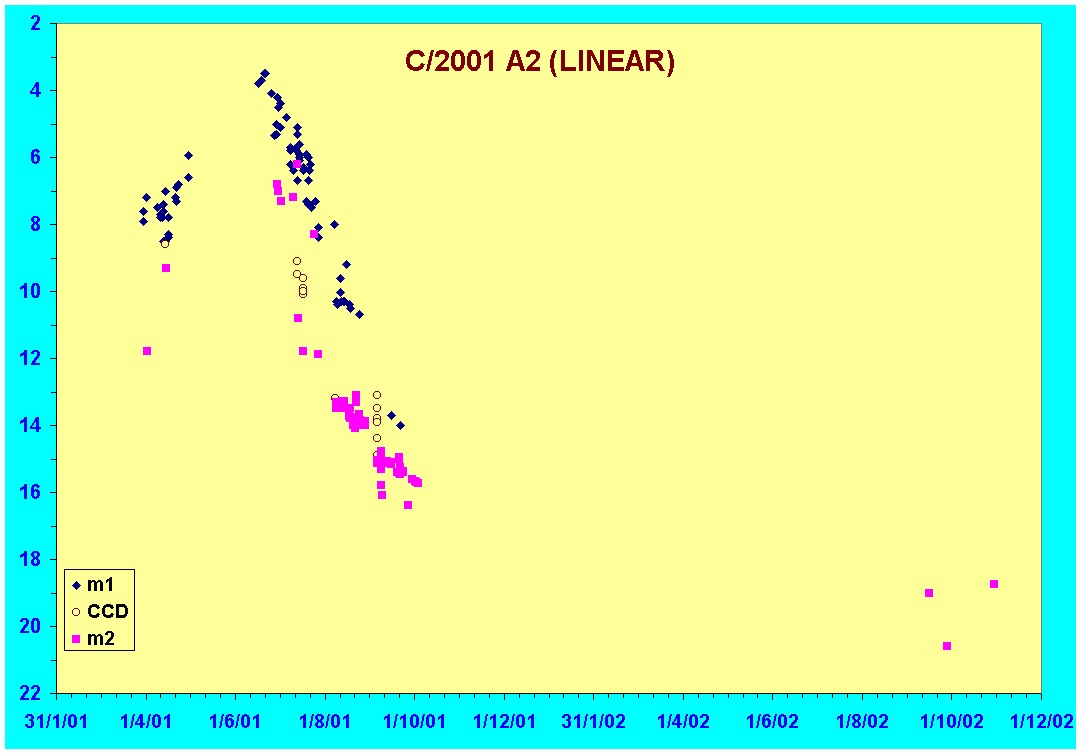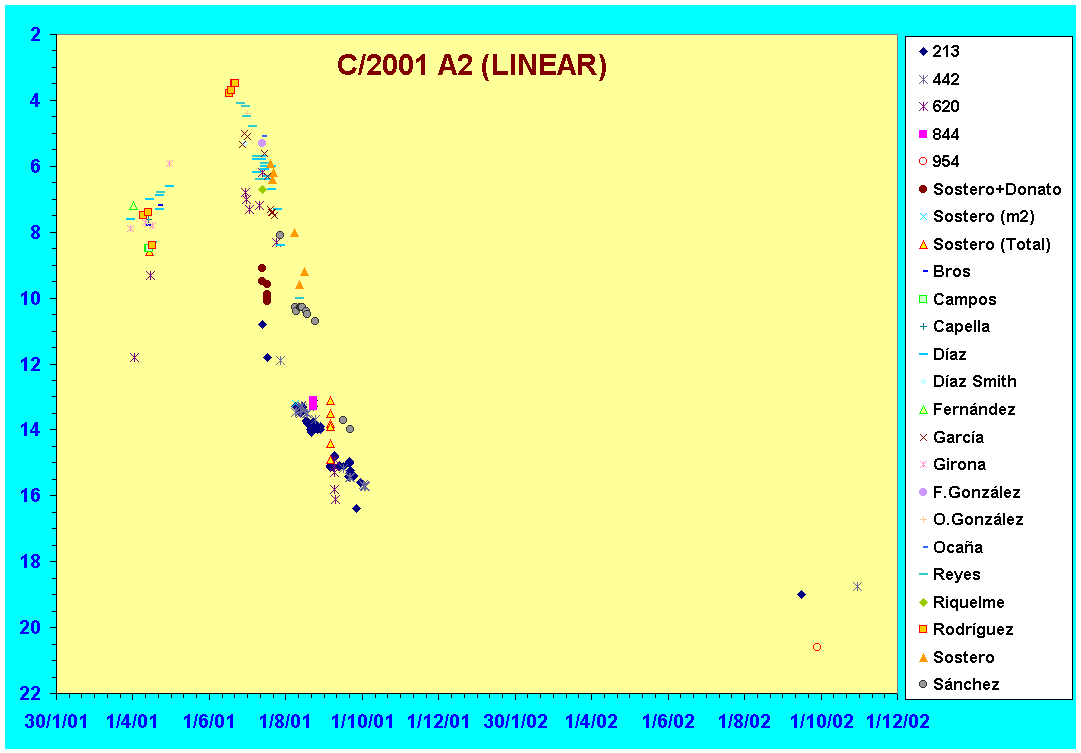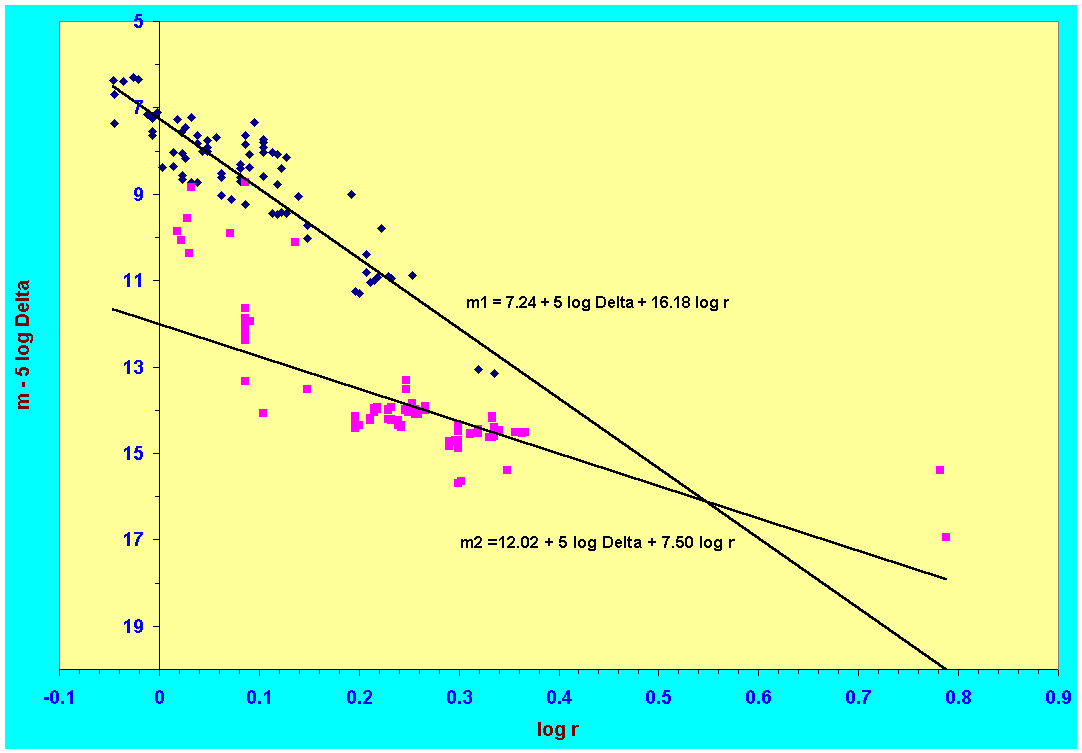C/2001 A2 (LINEAR)
This comet was discovered by the LINEAR telescope
on
It
was found that C/2001 A2 (LINEAR) was only 4 months from perihelion and would
be only just outside the orbit of Venus at the time. Being so faint though its
absolute magnitude was only 13.5, 7 magnitudes fainter than the
"average" new comet, so it was not expected to get brighter than
magnitude 10 at maximum. That it did was due to a series of huge outbursts that
increased its brightness by a factor of almost 3 orders of magnitude.
Many
of the outbursts were associated with the observation of secondary fragaments.
This provides strong support for the rubble-pile model of the nucleus where
small fragments separate from the main nucleus and evaporate or lose their
volatiles very rapidly.
Planetary
perturbations are progresively closing the orbit which has a semi-major axis a
little under 1000AU. Perihelion was passed at 12:29UT on
The light curve
The
light curve is well covered. There are 277 observations, made up of 88 total
visual magnitude estimates and 189 CCD estimates that cover the period from
Note
the very rapid rise and fall of the light curve. The comet passed from
magnitude 3.5 on June 22nd (Francisco Rodríguez), to 10.0 on August
8th (Paco Reyes).
The
last observation recorded by the
When
we examine the light curve separated by observers we see that there are
excellent sequences of total visual magnitude data by Paco Reyes and Giovanni
Sostero. Francisco Rodríguez covers the maximum of the light curve in late
June.
Many
other observers contribute a small number of observations.
The
light curve behaviour with heliocentric distance is very interesting. Here the
two relationships (for the total visual magnitude and for CCD data) are shown.
Note the very rapid rate of visual deline which goes as a 6th power
law.
The
CCD data shows a larger dispersion. Part of this is due to the fact that a few
points were taken with an aperture larger than the standard 10 arcseconds. Some
of it though is real variability. The September 15 th 2002 point is
a somewhat brighter than expected from the extrapolation of the 2001 data,
supporting suggestions that it may represent a significant new outburst that
permitted its detection. The Teide Observatory point from September 28th
lies closer to the extrapolation of the line of CCD magnitude, although not too
mucho should be read into the photometric precision of this point.
The
brightening law for the CCD data is significantly flatter than for the visual
data. This is largely to be expected as close to perihelion and perigee the
fraction of the coma enclosed by the 10 arcsecond aperture is much smaller than
at larger distances, thus making the comet seem artificially faint.
Observations by:
- Ramón Naves & Montse Campàs - MPC 213
- Albert Sánchez - MPC 442
- Salvador Sánchez & Juan Rodríguez - MPC 620
- Fabiola Martín-Luis - MPC 954
- Giovanni Sostero & Luca Donato
Visual data by:
- Javier Bros
- Neilia Campos
- Emili Capella
- Valentín Díaz
- Silvia Díaz Smith
- Federico Fernández
- Faustino García
- Pedro Girona
- Francisco González
- Oswaldo González
- Paco Ocaña
- Paco Reyes
- Marisol Riquelme
- Albert Sánchez
- Giovanni Sostero


